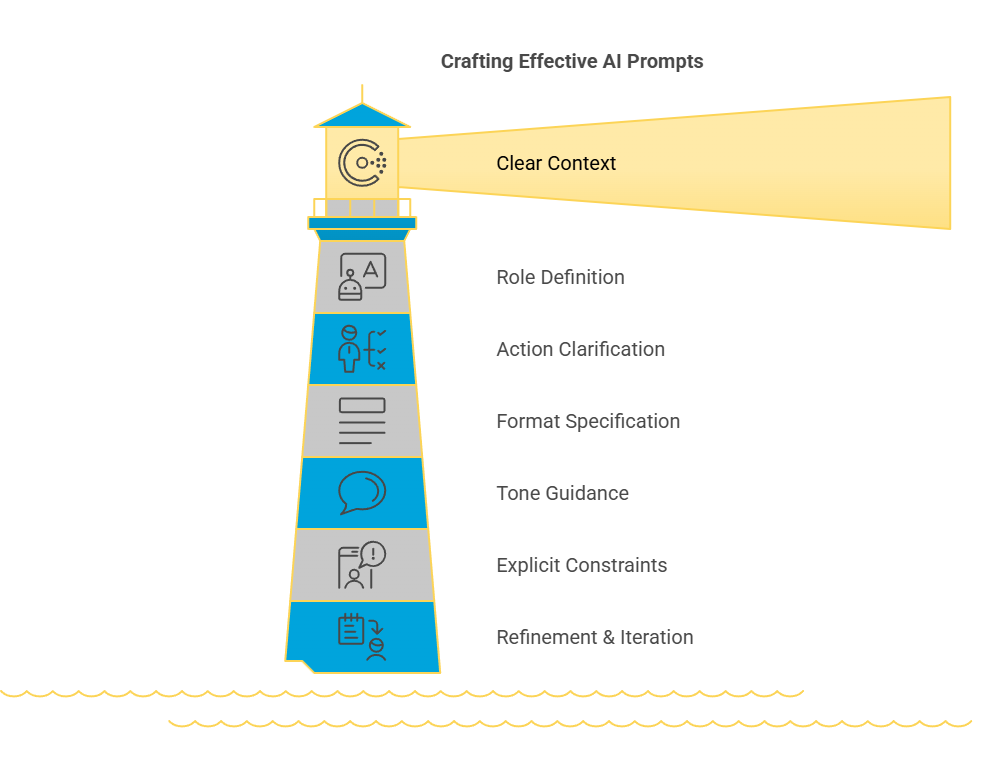The CRAFTER framework helps structure AI prompts effectively to achieve clear, precise, and actionable responses.
C – Clear Context
- Provide background details to help AI understand the request fully.
- Example prompt:
- You are an AI assistant helping users create structured content. The user wants to generate a comprehensive checklist for [topic]. The checklist should be tailored for [target audience] and include essential aspects such as [key considerations]. Ensure the response is clear, actionable, and formatted appropriately.
R – Role Definition
Clearly specify the role AI should assume for optimal responses.
- Assign AI a persona (e.g., career coach, industry expert).
- Tailor responses by specifying expertise level.
A – Action/Task Clarification
Clearly state what the AI should do.
- Outline the expected outcome.
- Use precise verbs (e.g., suggest, review, list, check, optimise).
F – Format Specification
Tell AI how the response should be structured.
- Bullet points, tables, lists, step-by-step guides, etc.
- Specify tone (formal, conversational, professional, friendly, etc.).
T – Tone & Style Guidance
Set expectations for the response style.
- Define tone (professional, engaging, concise, industry-specific).
- Indicate language preferences (e.g., British English, simple vocabulary).
E – Explicit Constraints
Limit AI’s response to fit your needs.
- Define word limits or character restrictions.
- Exclude unwanted details or topics.
R – Refinement & Iteration
Fine-tune the prompt based on the AI’s response.
- Ask follow-up questions to clarify results.
- Adjust wording if the output isn’t aligned with expectations.




